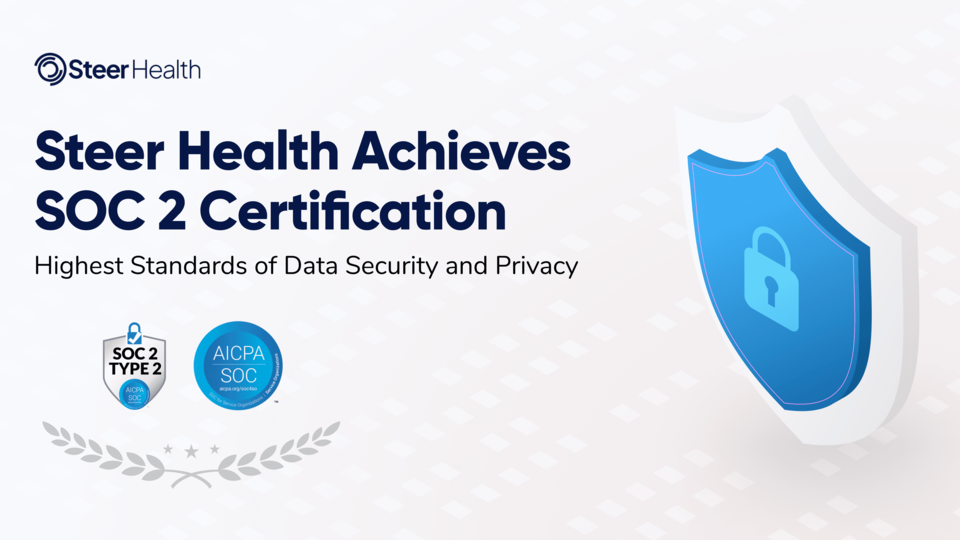Currently, U.S. healthcare costs for pharmaceuticals, technologies, and staff are growing 1.1% faster than the annual GDP is.
Particularly hospitals are under significant pressure to reduce costs if healthcare expenditures continue to rise and outpace revenues. Many health systems, such as Providence and Kaiser, reported substantial financial losses due to labor shortages, rising costs, and limited capacity.
To remain financially viable and continue to provide high-quality care to their patients, hospitals must find ways to reduce their costs without compromising the quality of care. That means they need to streamline operations, reduce spending on staff, make better use of their technology stacks, and attract patients who can pay more for their health care.
Let’s explore how exactly hospitals can drive new revenue streams and deliver care to more patients while reducing costs.
Streamline operations and automate time-intensive tasks
Inefficiencies cost companies between 20-30% of their revenues every year, and hospitals are no exception. Because of the size of their organization and the unique challenges they face in dealing with insurance guidelines, government regulations, etc., many hospitals tend to have duplicative processes, unnecessary paperwork, or excessively long lines of communication between departments, patients, and caregivers. By streamlining these processes, organizations can decrease the time spent on them and significantly reduce costs.
The first area hospitals can tackle is eliminating unnecessary manual tasks like paperwork. Hospitals can minimize paperwork by digitizing forms and records and using electronic systems for tasks such as billing and insurance processing.
Combined with workflow automation tools that handle repetitive tasks such as processing bills, insurance information, and EHR documentation, these processes consume minimal resources while delivering excellent results. Because AI automates routine tasks and routes documents for patient and physician approval, far fewer manual interventions are required, resulting in faster patient care delivery.
Another area that can be easily streamlined with tech is communication. Modern communication tools driven by AI and ML can manage entire communication flows from start to finish without any manual input. By using AI-powered communication tools to assist patients with inquiries, allow them to make appointments online, and send important notifications, hospitals can reduce no-shows and long phone call queues without creating additional work for them.

Integrate fragmented technology solutions and enhance data analytics
Until today, many hospitals have adopted technology solutions such as electronic health records (EHRs) and telemedicine as they help improve efficiency. However, they often face fragmented systems, inefficient data use due to disconnected tools, and high bills for vendors and technology integrations. In fact, an overwhelming 90% of healthcare leaders reported losing revenue due to inefficient data use, according to a new survey and report from healthcare data company Intelligent Medical Objects and market researcher PureSpectrum.
By integrating each solution into a comprehensive platform and ensuring that all data systems are properly integrated, hospitals can reduce their technology spending and better oversee the ROI of their tech investments. In addition, integrating data systems and receiving them via a single dashboard helps drive more effective data analytics.
Integration of fragmented tools can be a daunting task. Start by comprehensively auditing your current technology infrastructure to identify gaps or overlaps. This will help you determine which systems need to be integrated, which can be replaced, and where an all-in-one platform might be advantageous. Also, ensure your tools are compatible with popular EHR systems, such as Athena Health, Epic, and Cerner.
Consider partnering with a technology vendor specializing in healthcare integration and offering a comprehensive tech stack to ensure the process is smooth and efficient. These experts can help with data migration and reduce errors or loss when connecting fragmented systems. Look for vendors that offer a dedicated account executive or growth expert, as these will personalize the technology solutions and analytics needed for your organization.
Optimize staff resources to minimize redundant costs
As costs for staff are currently at an all-time high, hospitals must look to optimize staffing. This means ensuring they have the right number of employees in the right roles and at times needed. This can help reduce costs associated with overtime and overstaffing.
You can start this process of optimizing staff by forecasting patient demand: By analyzing historical data, hospitals can forecast patient visits and adjust staffing accordingly. This can prevent overstaffing during slow times and understaffing during busy times.
Technology can help optimize staffing by automating specific tasks, such as scheduling and monitoring staff availability. But, as discussed above, you can also automate tasks usually done by staff and help free time and resources for more important things like patient care.
Attract more patients and better payer mix
Hospitals depend on the funds they receive from patients and their insurance. A better payer mix and more frequent and highly-valued care like surgeries can provide financial stability, higher reimbursement rates, lower bad debt and charity care, and greater bargaining power for hospitals.
Achieving a higher payer mix requires using the right tools and strategies to improve patient care and deliver stellar patient experiences. Patients willing to pay more for healthcare value quality of care enjoy digital patient journeys, access to their healthcare data, smooth operations, and personalized care experiences. Hospitals can attract these patients by investing in their facilities and equipment, digitizing their healthcare practice, hiring top-notch physicians and specialists, and implementing best practices for patient care.

Patients also value things like concierge services that help address their needs better. These can include personalized attention from a dedicated staff member, access to exclusive services, or streamlined communication channels when requiring medication, resolving questions, or needing personal attention. In addition, giving them a proactive role in their own health journey will leave them more satisfied and, thus, willing to return to your practice for their subsequent healthcare demand.
Why your revenue depends on your reputation
Overall, excellent patient care positively impacts the hospital’s reputation, which in turn helps attract new patients and increases payers. Today, most people check a hospital’s reputation via digital pages like Google Reviews or ZocDoc.
To ensure that the high quality of your care is reflected online, make sure your patients leave positive reviews on digital channels. Generally speaking, a high rating on Google with more than four stars will help attract more patients – but the higher, the better.
Encourage your existing customers to leave reviews. You can do this by sending automated notifications and offering things like Amazon gift cards, goodies, or free health checks for leaving a review on Google or your website. To get higher ratings with time, incorporate their honest feedback into optimizing your services.
Technology will help drive higher revenue
As healthcare costs rise, hospitals need new strategies to keep revenues high. Many hospitals are cutting costs by laying off the staff or cutting back on care – but the truth is that these measures have a negative long-term impact on reputation.
Instead, hospitals can focus on streamlining operations, using AI and technology to cut costs and reduce expensive staff hours, improving their reputation to attract a better mix of payers and more patients. This will not only help generate new revenue but also ensure the future success of your organization.
Book a free, personalized consultation with one of our growth experts to learn how Steer Health’s AI-powered growth and automation platform can become your strategic partner for better financial and clinical outcomes.











